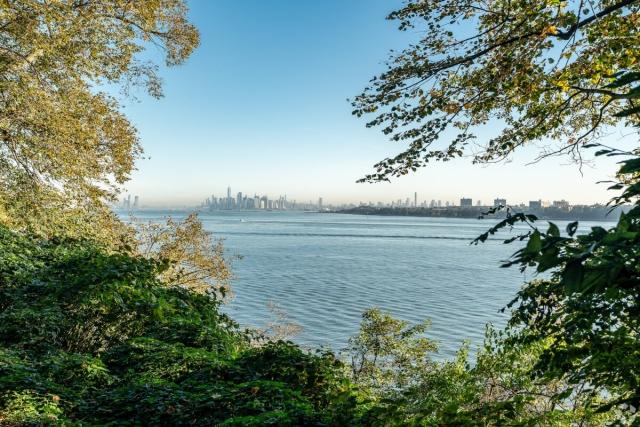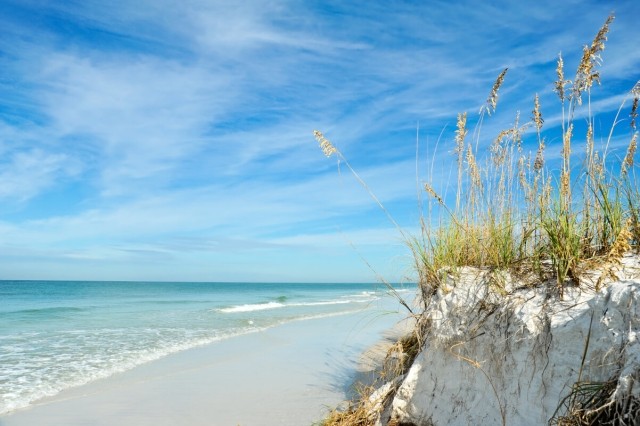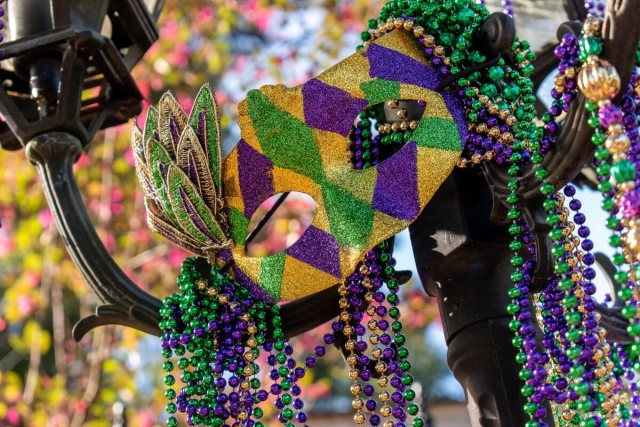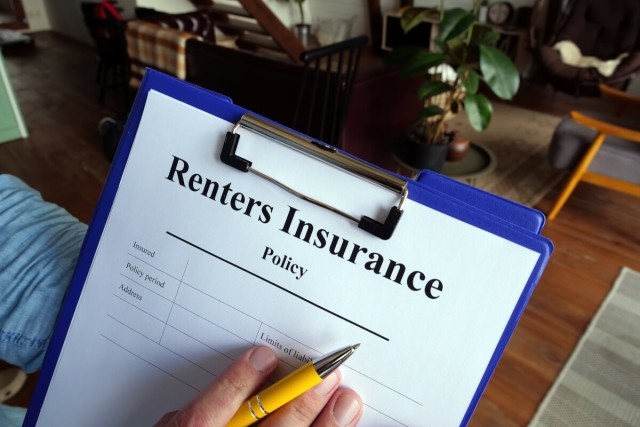So, you’re thinking about moving to NYC. With a land area of 300.4 square miles, according to the U.S. Census Bureau, there are a lot of options.
New York City is made up of five boroughs: Manhattan, Brooklyn, the Bronx, Queens, and Staten Island. Each borough has a different atmosphere and culture, and each neighborhood is equally diverse.
Choosing the right place to live in New York can be hard, especially when there are five boroughs to choose from. We’ve done the work for you and compiled a list of the five best places to live in each New York City borough based on Niche.com ratings and research of renter preferences.
Manhattan
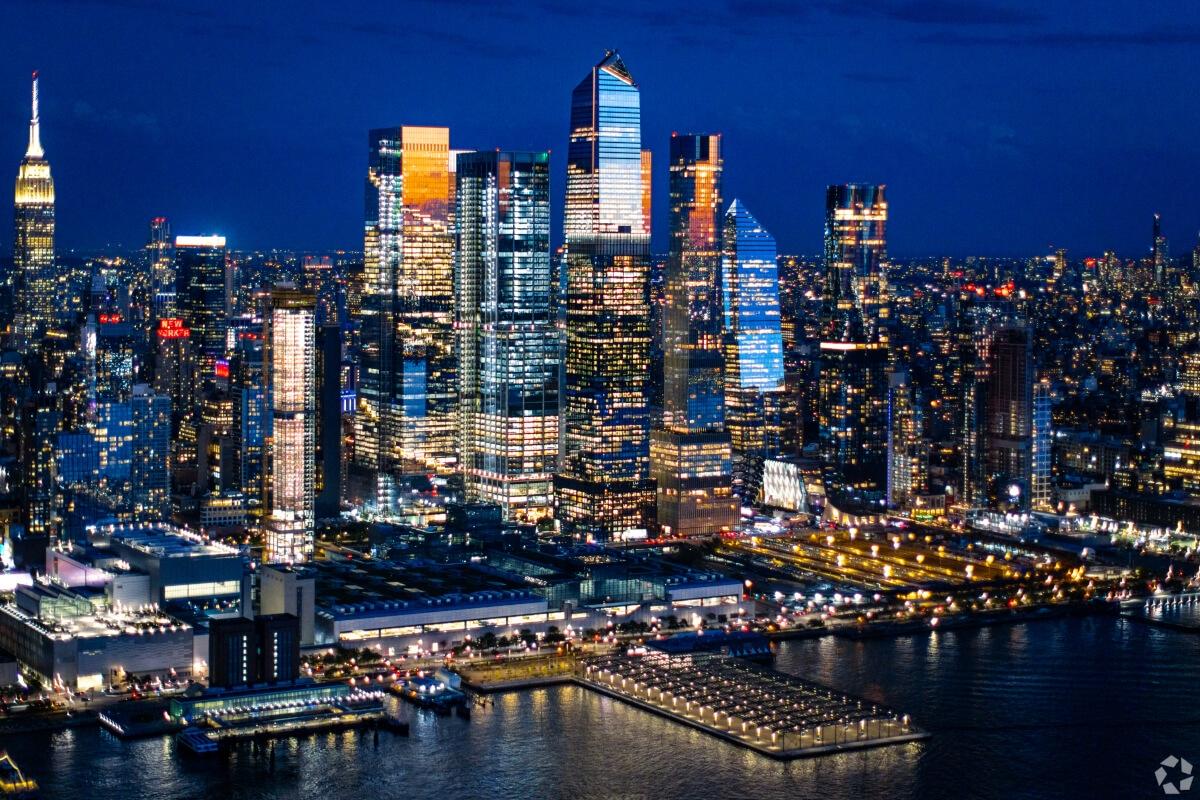
When you think of the Big Apple, you probably think of Manhattan. Manhattan is the focal point of NYC, housing the city’s financial and entertainment industries. Many Manhattan residents work in Midtown Manhattan and Downtown Manhattan and look for neighborhoods that balance a short commute with distance from the busiest parts of the city.
The five best places to live in Manhattan in 2025 are:
Little Italy
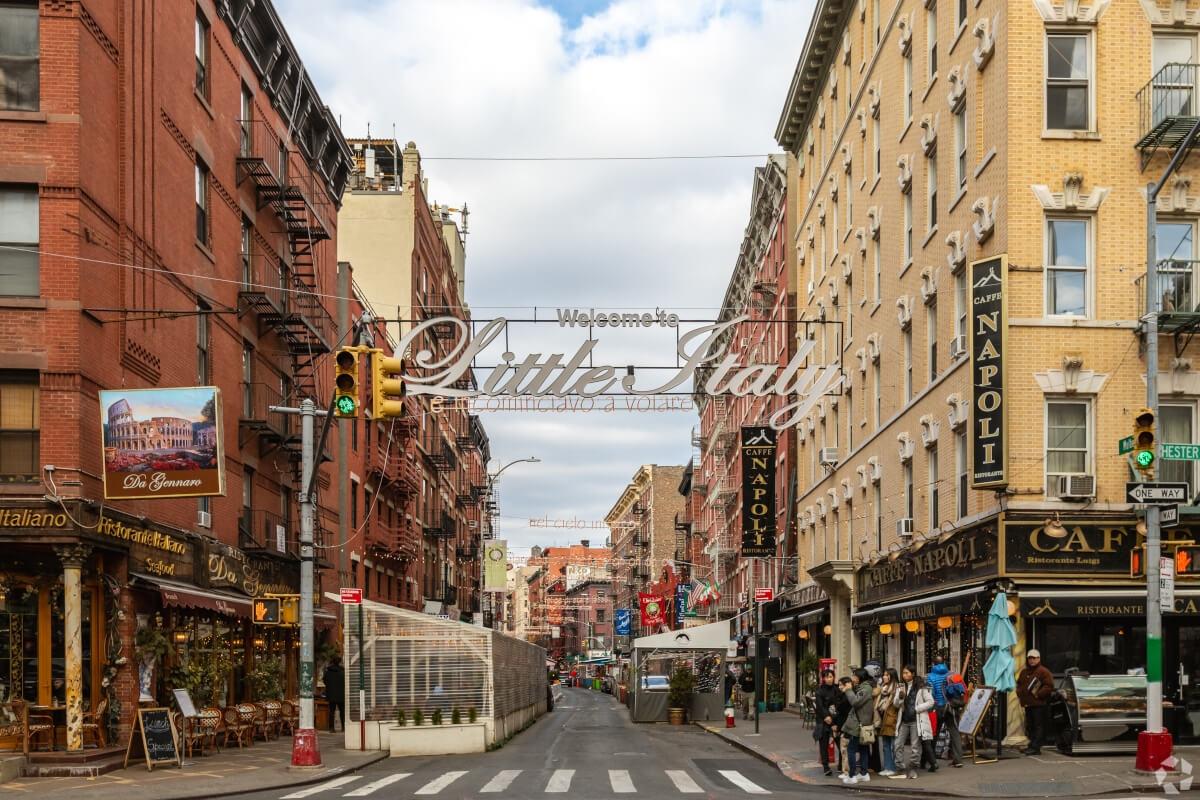
Little Italy is a neighborhood in Lower Manhattan aptly named for its Italian roots. Italian restaurants are scattered along Mulberry Street, a historic street known for its Italian-American culture.
The neighborhood’s association with Italian culture goes far beyond local businesses. Little Italy hosts the 11-day Feast of San Gennaro each year, a celebration honoring the patron saint of Naples, Italy. The neighborhood’s celebration features a parade, live music, and a cannoli eating contest.
Kips Bay
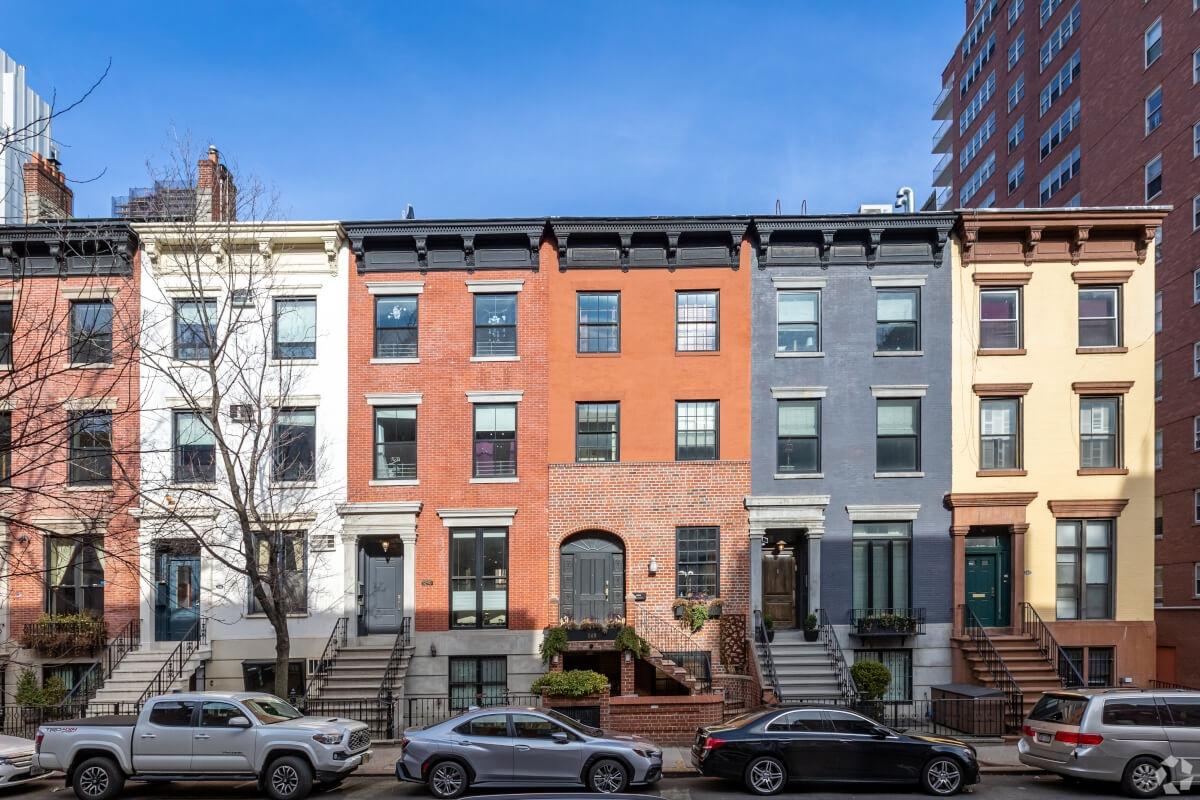
Kips Bay is located just south of Midtown Manhattan, across the East River from Brooklyn. Its convenient location places it within reach of major landmarks like the Empire State Building, but it’s just far enough away to offer residents some privacy.
See the city’s best stand-up at the New York Comedy Club, or grab five of your favorite people and stop by The FRIENDS Experience for some photo ops straight out of the 90s sitcom. Restaurants along 3rd Avenue have something for every craving, and Bellevue South Park is the perfect spot to enjoy the outdoors.
Hell’s Kitchen
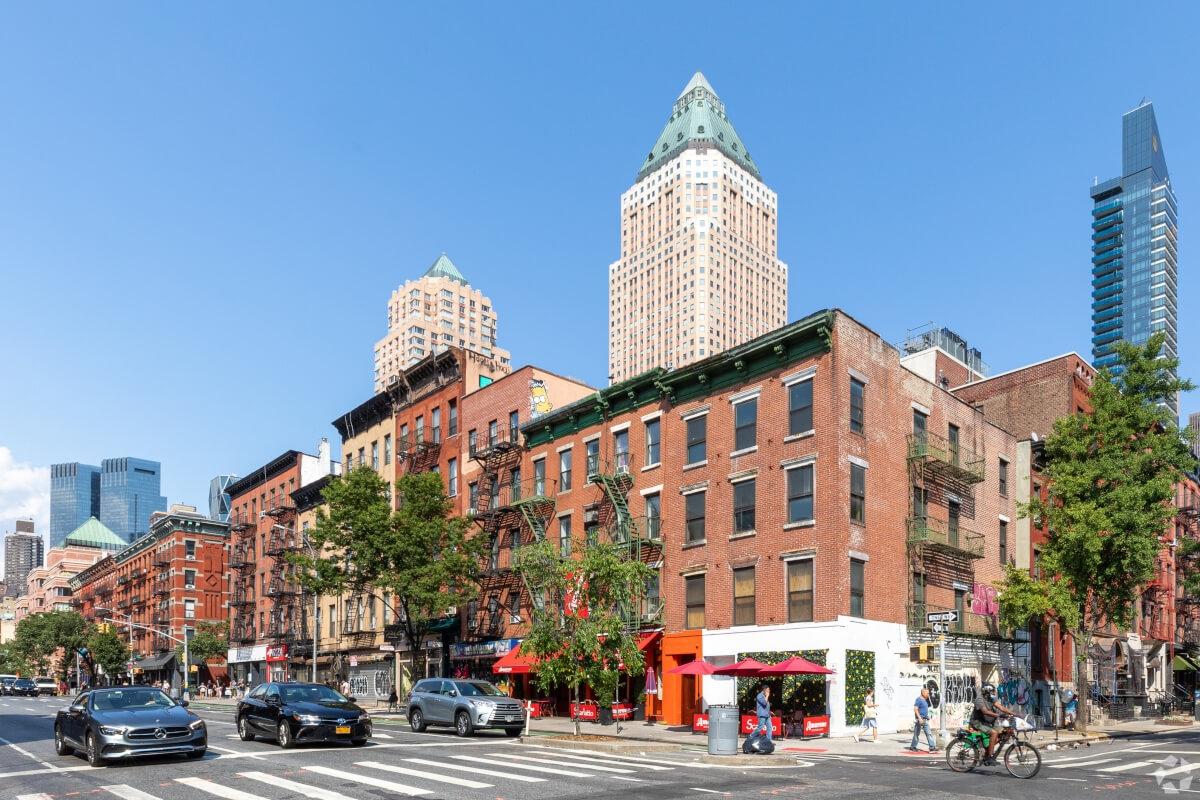
While the name may be daunting, Hell’s Kitchen is an iconic NYC neighborhood. Like many neighborhoods in Manhattan, Hell’s Kitchen is a walkable area with restaurants and bars scattered throughout.
Hell’s Kitchen is a great neighborhood for commuters, with public transit access all around and lower rent prices compared to neighboring areas. By train, it takes around 20 minutes to get to Midtown Manhattan and about 30 minutes to get to the Financial District.
Morningside Heights
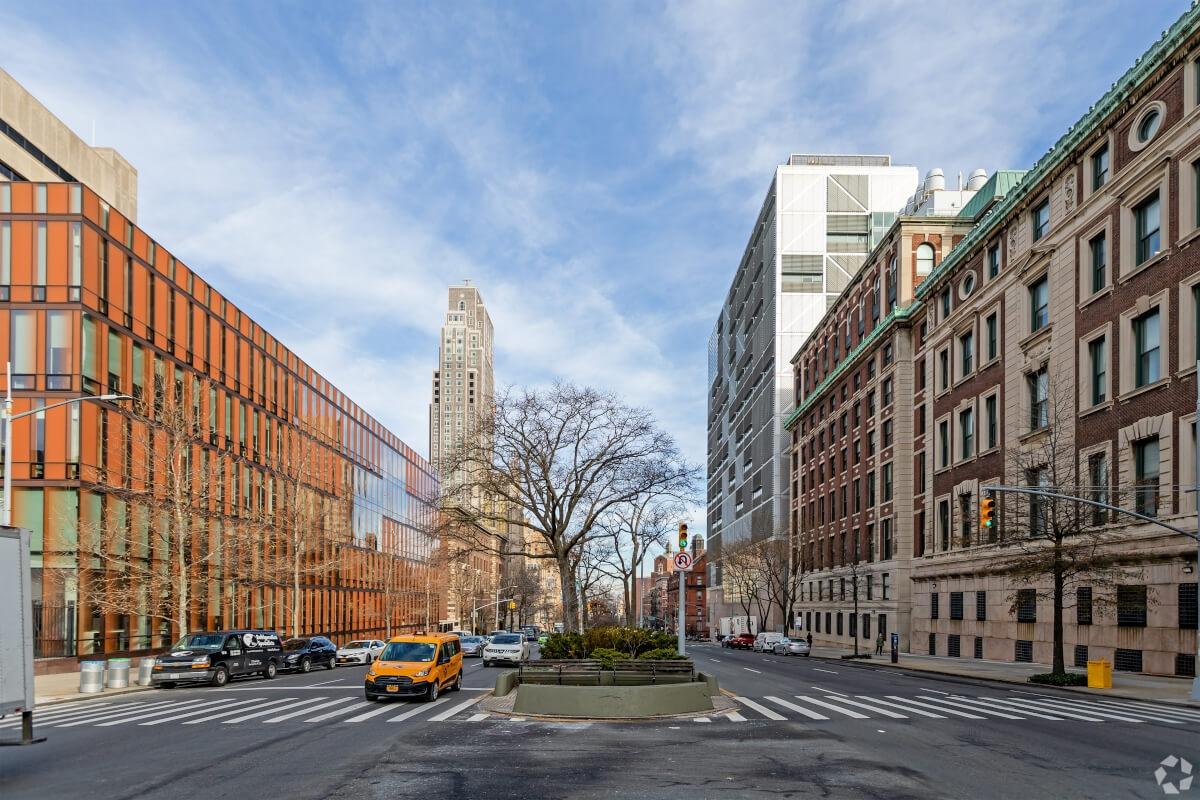
Morningside Heights is sandwiched between Riverside Park and Morningside Park in the northern half of Manhattan. Living in this picturesque area surrounded by Renaissance Revival architecture places you just a 25-minute train ride away from Midtown Manhattan.
With Columbia University and Barnard College at its center, Morningside Heights offers a college town feel. Both of these historic universities contribute to the area’s stunning 19th century architecture, as well as the neighborhood’s performing arts scene.
Chelsea
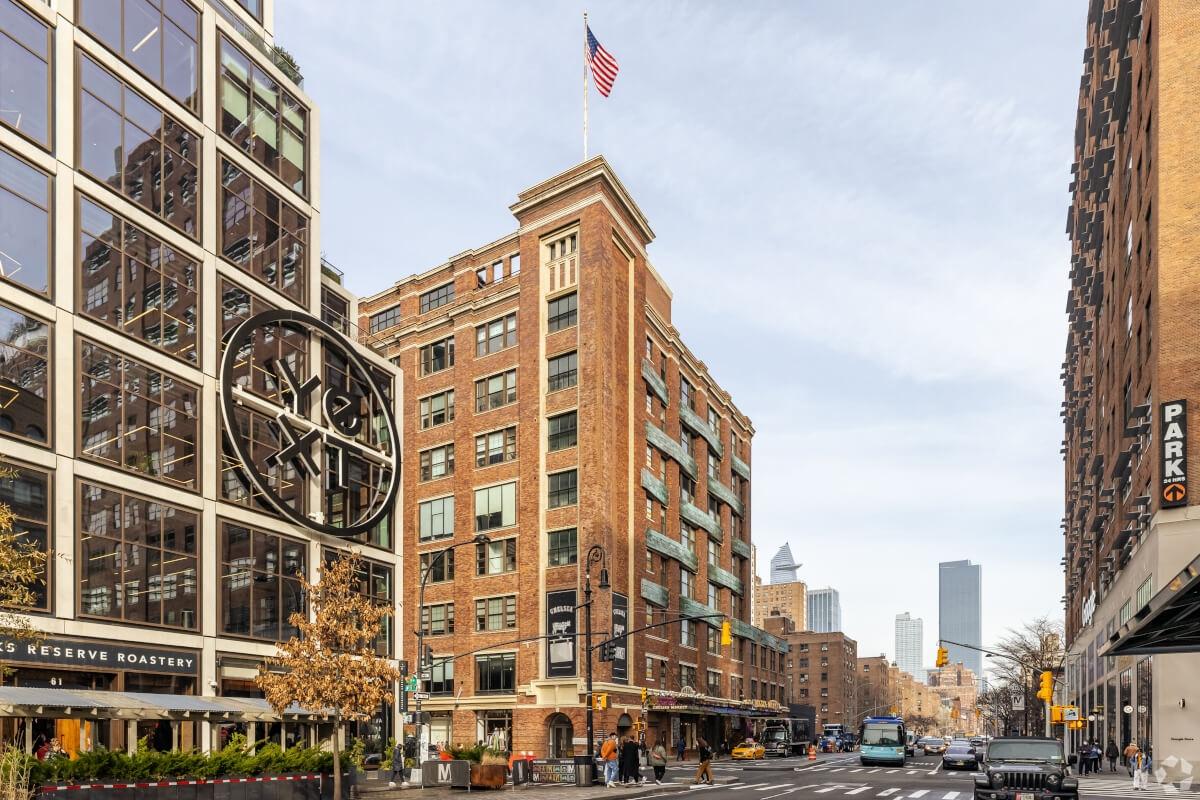
Chelsea is Manhattan’s art district bordered to the north by the Lincoln Tunnel. This trendy neighborhood is right in the middle of all the action—Chelsea is just south of Midtown Manhattan, making for a short commute to work.
Entertainment is not scarce in Chelsea. Art galleries are scattered between 10th and 11th Avenues, and the Fashion Institute of Technology and its accompanying museum host fashion-centric events that are open to the public. The Whitney Museum of Art exclusively features 20th-century and contemporary art, and the Rubin Museum of Art is dedicated to showcasing art from the Himalayas. Check out celebrity doppelgängers at Madame Tussauds, the infamous wax museum featuring likenesses of Beyoncé, Ariana Grande, Captain America, Albert Einstein, and more.
Brooklyn
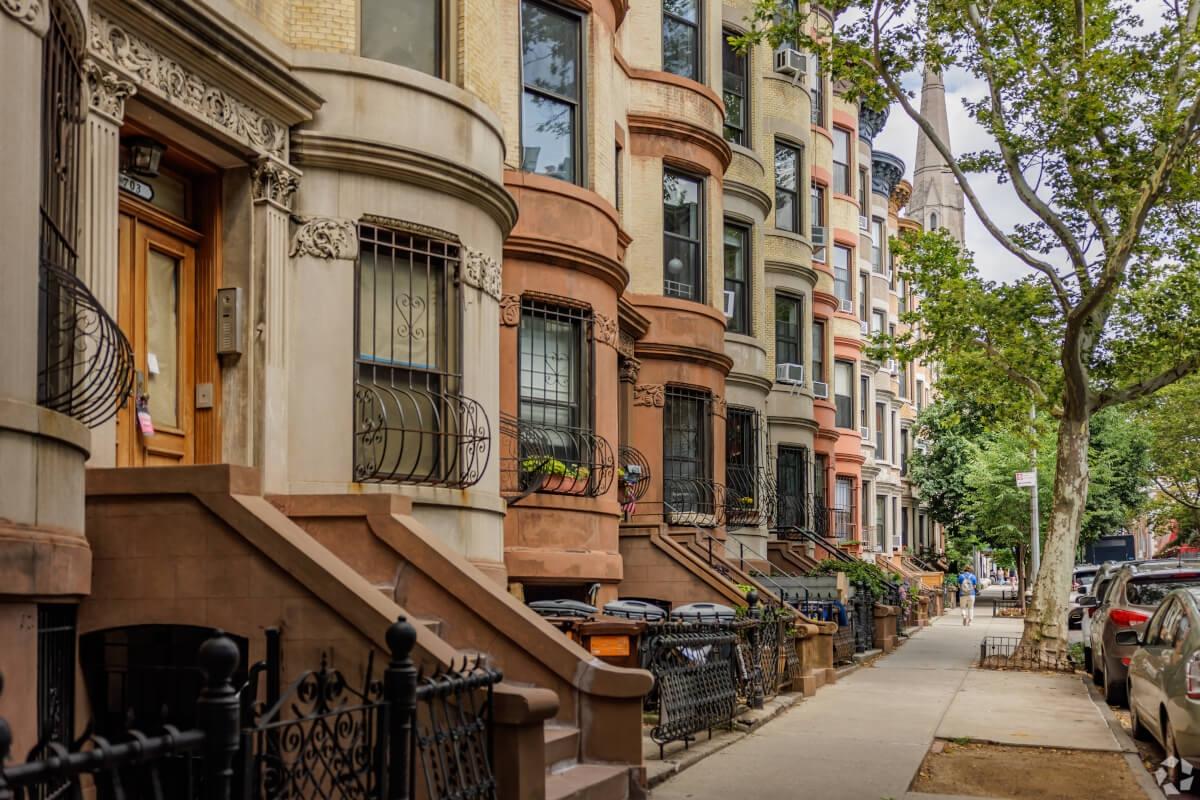
Brooklyn residents love the borough for its eclectic atmosphere and stunning brownstones. Between the Brooklyn Bridge and numerous train lines, Brooklyn is a great place for commuters who want a quieter version of the Manhattan experience.
The five best places to live in Brooklyn in 2025 are:
Brooklyn Heights
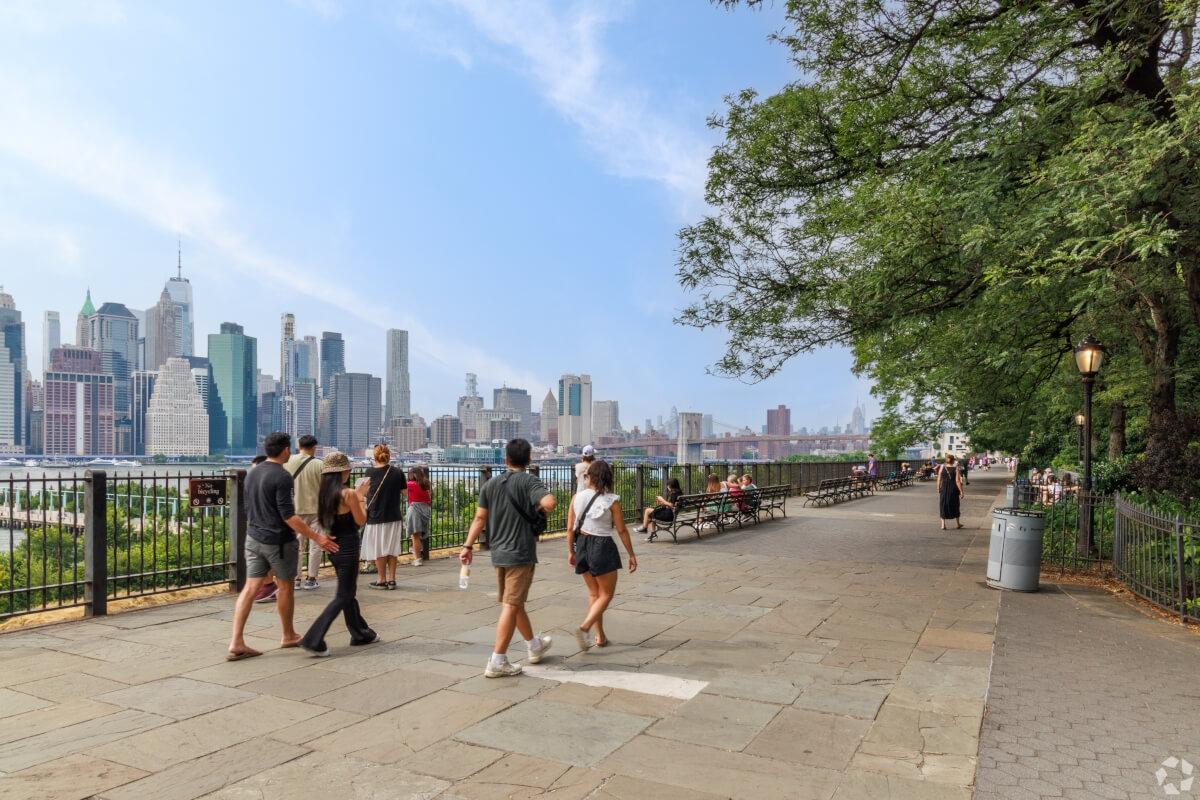
Brooklyn Heights is a suburb within city limits. Brownstones and row houses give the neighborhood the quintessential NYC feel while offering a quieter experience than other areas. Commuting to Manhattan’s Financial District takes 10 to 20 minutes by the 2 or 3 trains, depending on your stop, making Brooklyn Heights a great choice for renters who work in Manhattan.
Brooklyn Heights Promenade is a neighborhood staple, offering views of Downtown Manhattan across the East River. The Center for Brooklyn History is a museum and library that hosts exhibitions and programs focused on educating Brooklyn residents on the borough’s history. Brooklyn Heights is also surrounded by restaurants, ensuring residents can enjoy the New York foodie experience.
Carroll Gardens
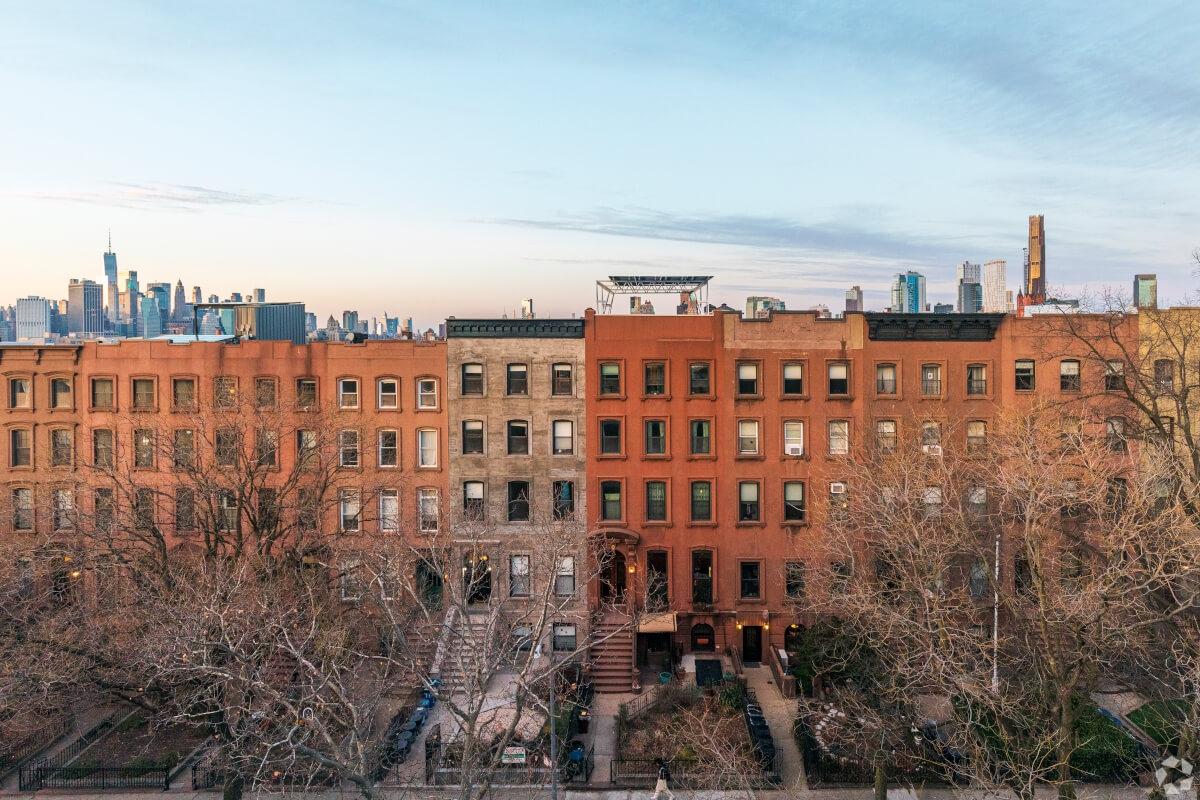
Carroll Gardens is a walkable neighborhood next door to Downtown Brooklyn that preserves its history in brownstones and restaurants. Carroll Gardens is one of many New York neighborhoods heavily influenced by Italian American culture, and Italian restaurants along Court Street and Smith Street allow residents to enjoy the neighborhood’s roots.
As a mostly residential area, Carroll Gardens offers a slower pace of life compared to other neighborhoods in New York. Multiple subway stations connect residents to work hubs in Manhattan, but Carroll Gardens is just far enough to disconnect residents from the hustle and bustle.
Cobble Hill

Cobble Hill sits along the East River just south of Brooklyn Heights. This riverfront neighborhood has quiet, walkable streets lined with 19th century brownstones, and many residents get around by walking or biking.
Restaurants along Court Street and Smith Street have everything from authentic Lebanese dishes to NYC’s signature bacon, egg, and cheese sandwich. Cobble Hill Cinemas is an old school-style theater showing all the latest releases, perfect for the cinephile. Trees and small green areas break up the urban landscape and provide a beautiful backdrop for a leisurely stroll.
Park Slope
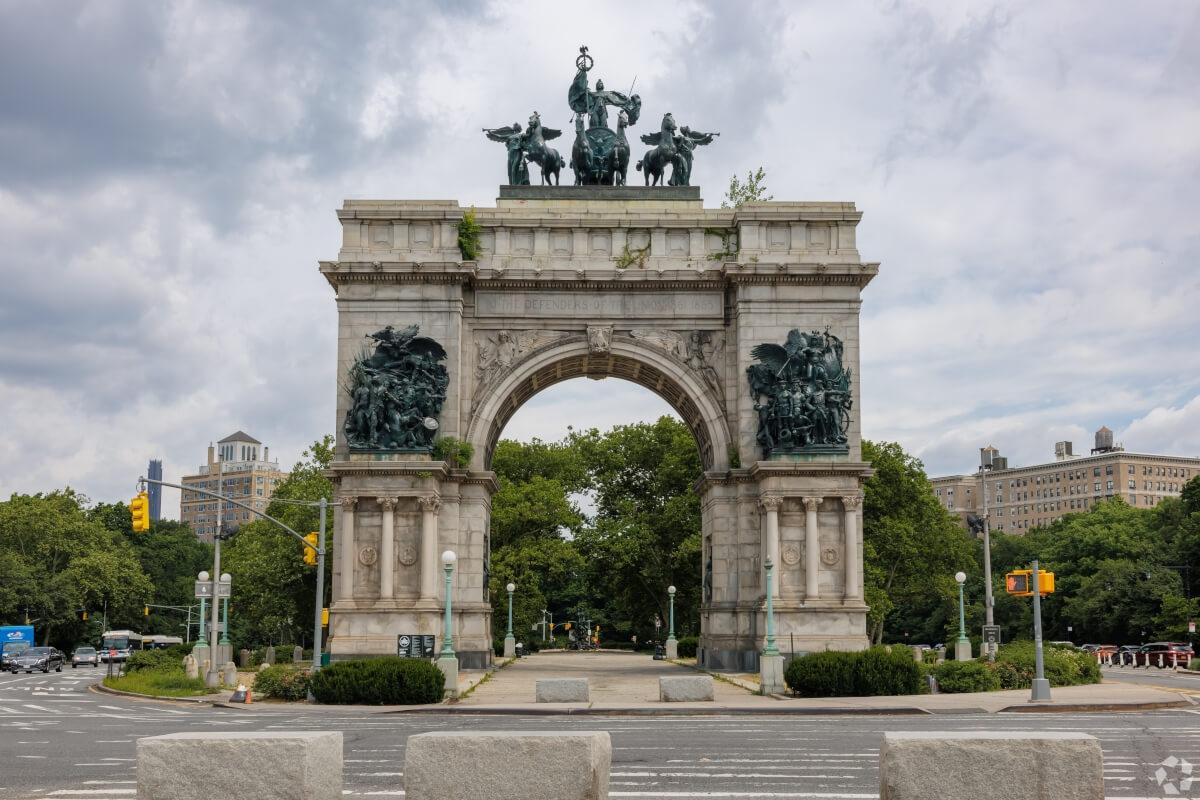
Park Slope is an upscale area and a favorite among Brooklyn locals. Bordered by Prospect Park, Park Slope is one of Brooklyn’s most beloved neighborhoods for its historic brownstones, entertainment and food scenes, and laid-back atmosphere.
Catch a show at The Bell House, an event venue that hosts concerts and comedy shows. See all the new releases at Nitehawk Cinema, a retro movie theater that serves craft cocktails. End your day enjoying dinner at one of the numerous restaurants along 5th and 7th Avenues, all within walking distance of your home.
Prospect Heights
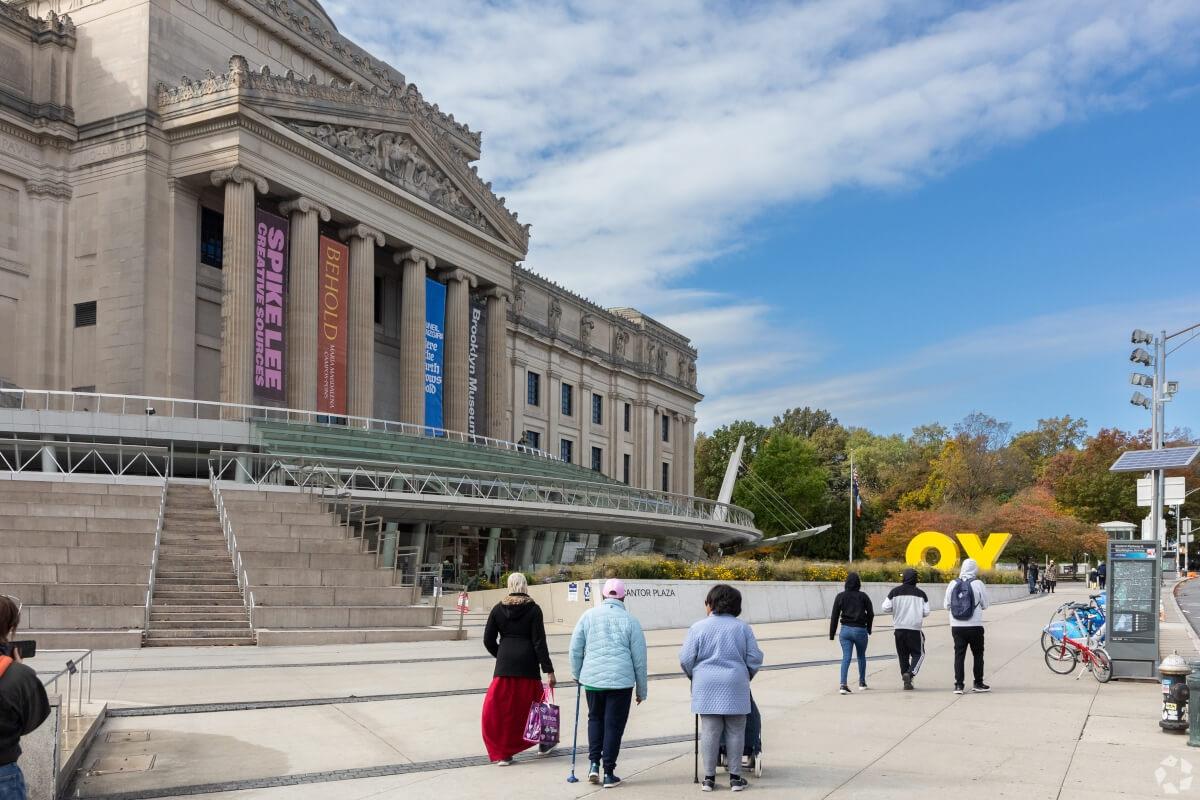
Residents enjoy walkability to the Brooklyn Museum, the Brooklyn Botanic Garden, the Barclays Center, and Prospect Park. Residents love the availability of public transportation that makes it easy to get to and from Midtown Manhattan, and the neighborhood’s architecture and green space makes it a lovely place to live.
Prospect Park is the crown jewel of the neighborhood, with 585 acres of green space. Enjoy a coffee and a pastry at Purslane Café at the Prospect Park Boathouse, see your favorite animals at the Prospect Park Zoo, and visit the Smorgasburg open-air market every Sunday in the park.
The Bronx
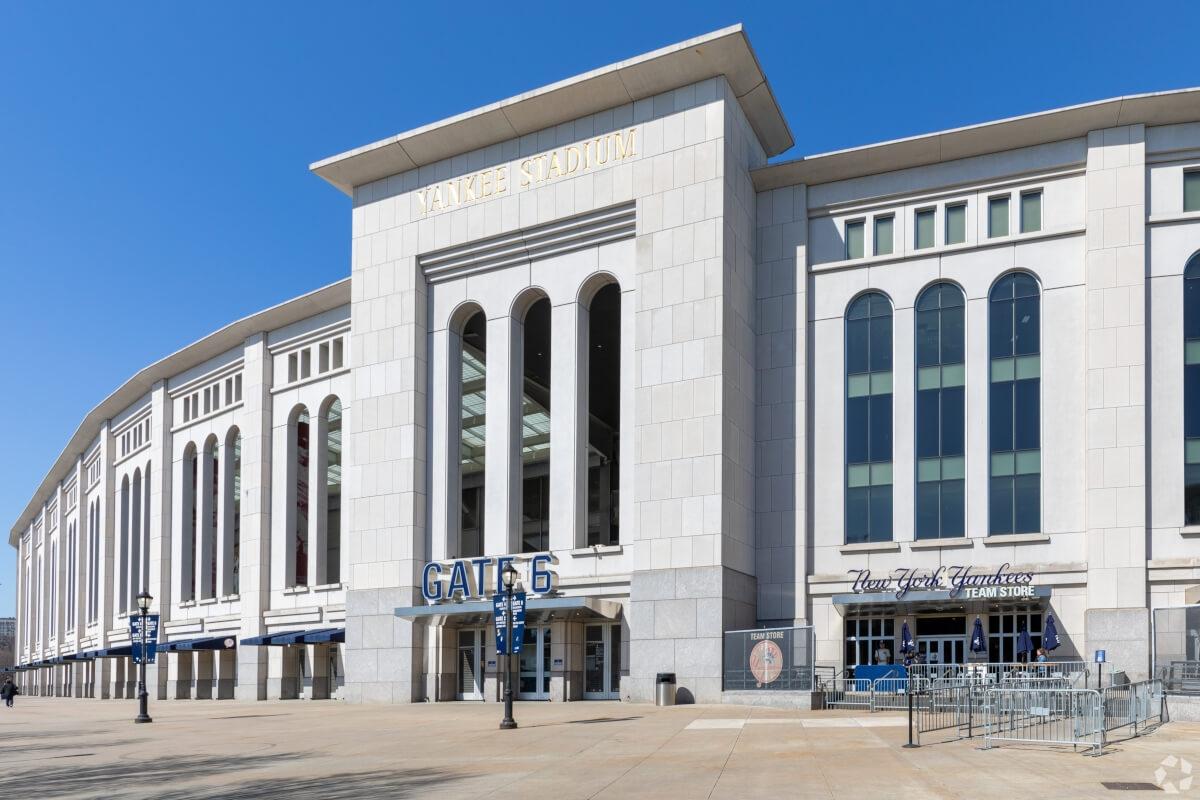
The Bronx sits just north of Manhattan across the Harlem River and is rich with cultural diversity and historic landmarks. Known as the home of the New York Yankees and the birthplace of hip-hop, the Bronx offers a quieter and more affordable lifestyle compared to other parts of New York City.
The five best places to live in the Bronx in 2025 are:
Bronxdale
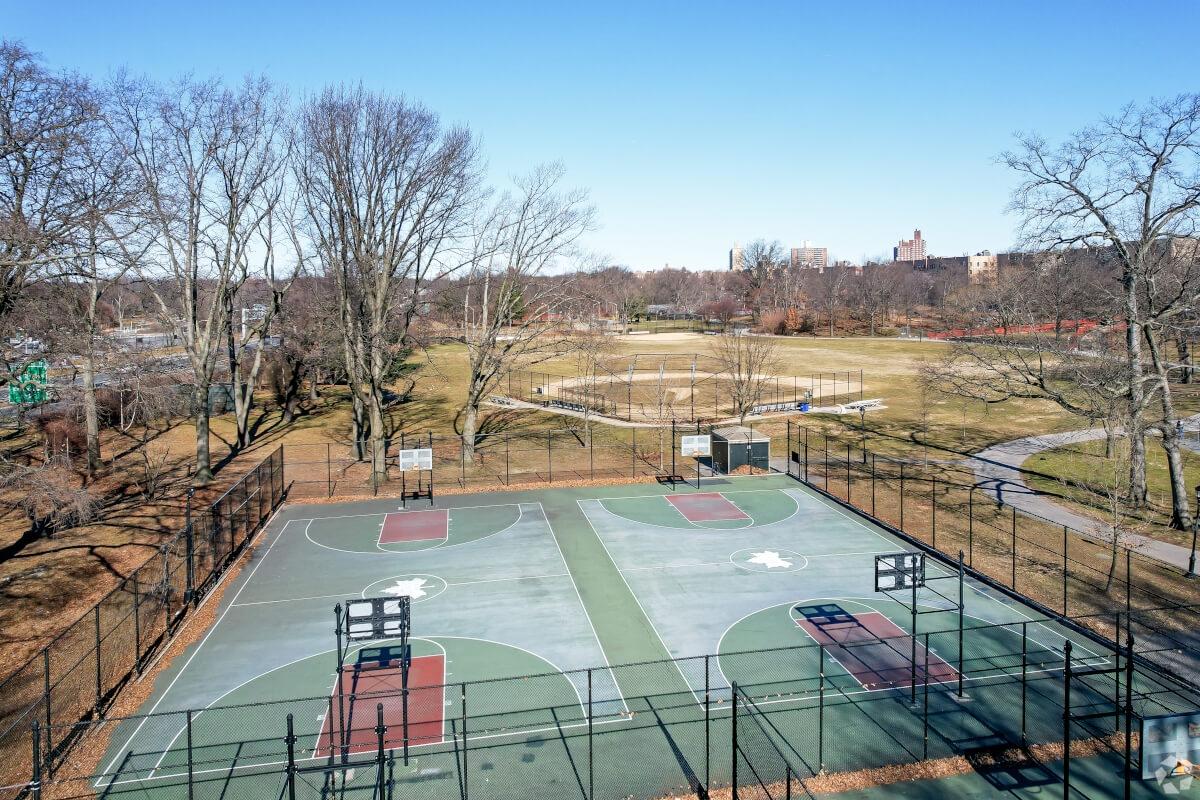
Bronxdale is a relaxed neighborhood right next to Bronx Park. Residents love Bronxdale’s walkable, residential streets, and numerous restaurants and convenience stores make living here comfortable. Several subway lines connect residents to Manhattan in half an hour, and the nearby Bronx River Parkway makes it easy to get around the borough by car.
The Bronx Zoo and the New York Botanical Garden are both within Bronx Park and make the perfect destinations for a day out. White Plains Road is the neighborhood’s commercial hub, with local favorites like Tacos El Bronco and Café Colonial Restaurant within walking distance.
Fieldston
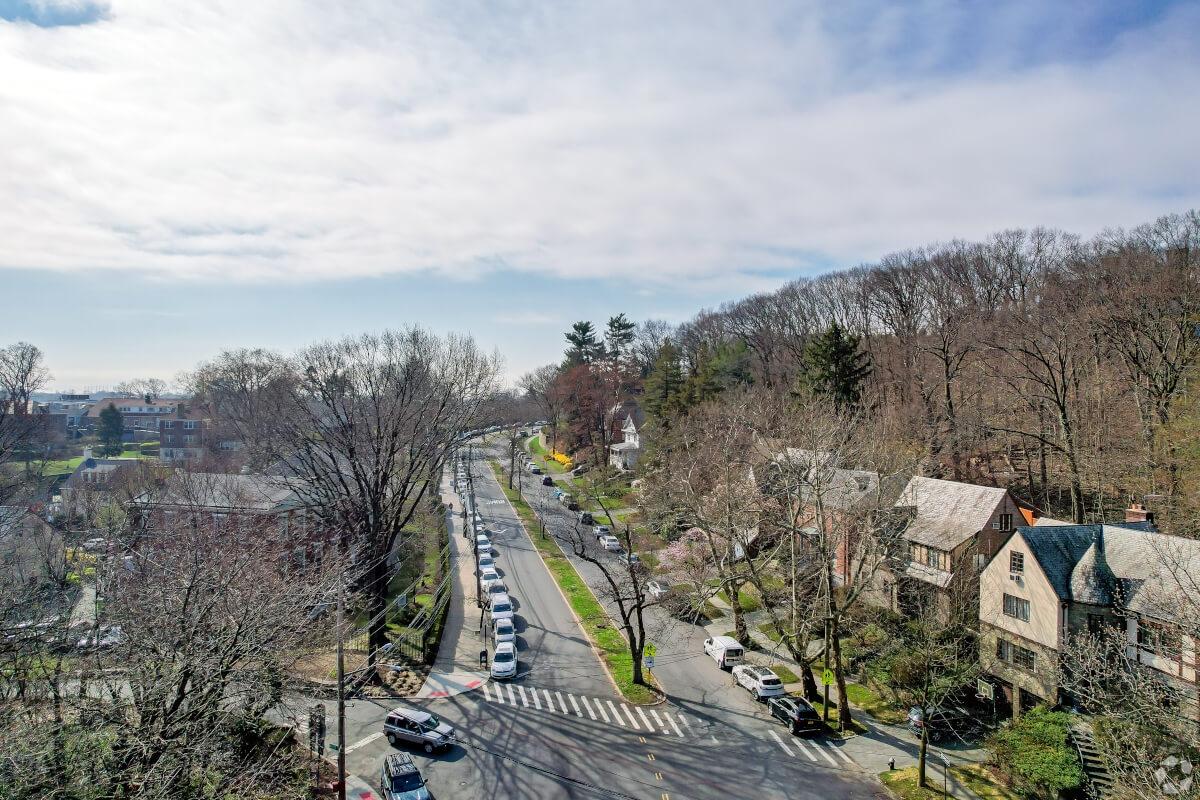
Home to Manhattan College, Fieldston is a quiet and exclusive university neighborhood known for its unique homes and green surroundings. This neighborhood features large single-family homes and winding streets shaded by old trees, and residents love the peace and privacy this neighborhood offers. Public transport options include the 1 train and Metro-North Railroad, which connect residents to other parts of New York and beyond.
While Fieldston lacks a significant commercial area, restaurants and shopping centers are just a short drive or bus ride away in Kingsbridge. Residents enjoy proximity to Van Cortlandt Park, perfect for outdoor activities like jogging, hiking, and golfing.
Morris Park
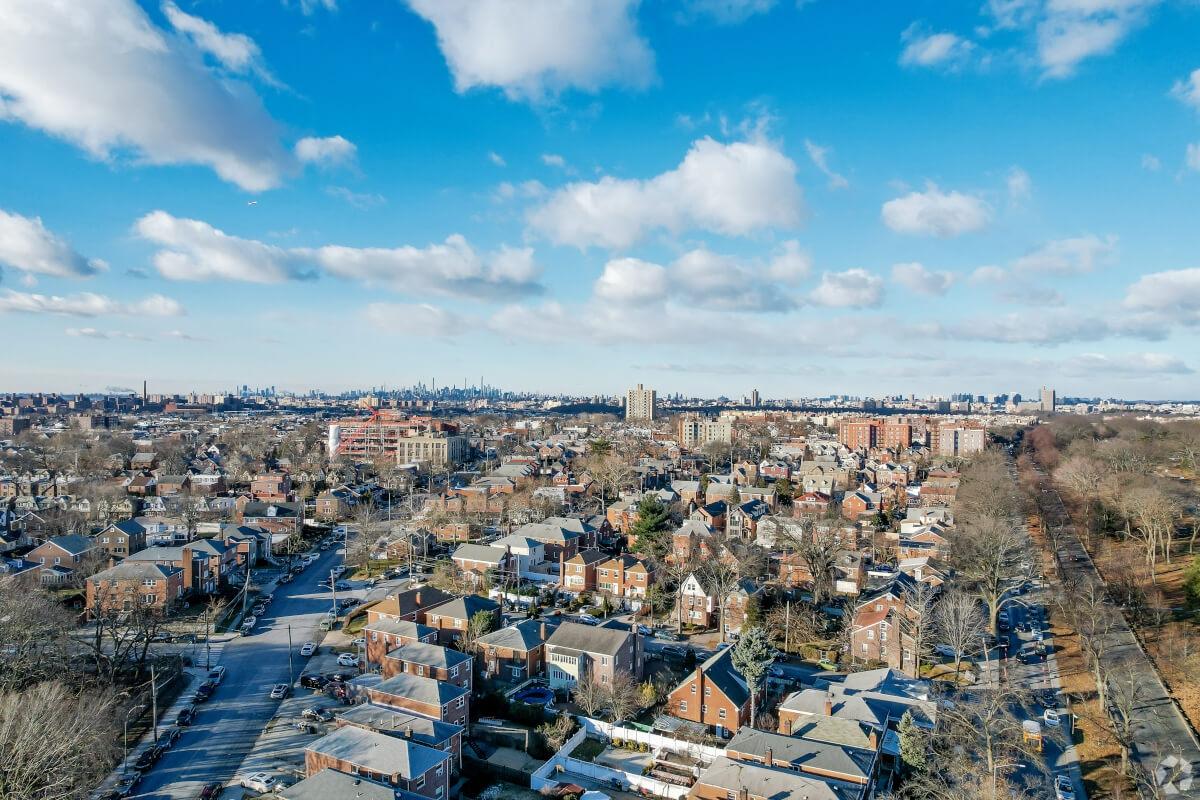
Morris Park is a residential neighborhood known for its brick homes and strong sense of community. The area is dotted with Italian restaurants, bakeries, and small businesses that serve the needs of locals, and the three hospital campuses nearby ensure that residents’ lives are as healthy as they are well-rounded.
Residents can get to Grand Central Station in about 45 minutes via the 5 train, and the Metro-North Railroad connects residents to Upstate New York. While the commute to Manhattan is longer, locals value the quieter, more suburban atmosphere in Morris Park compared to neighborhoods closer to business hubs.
North Riverdale
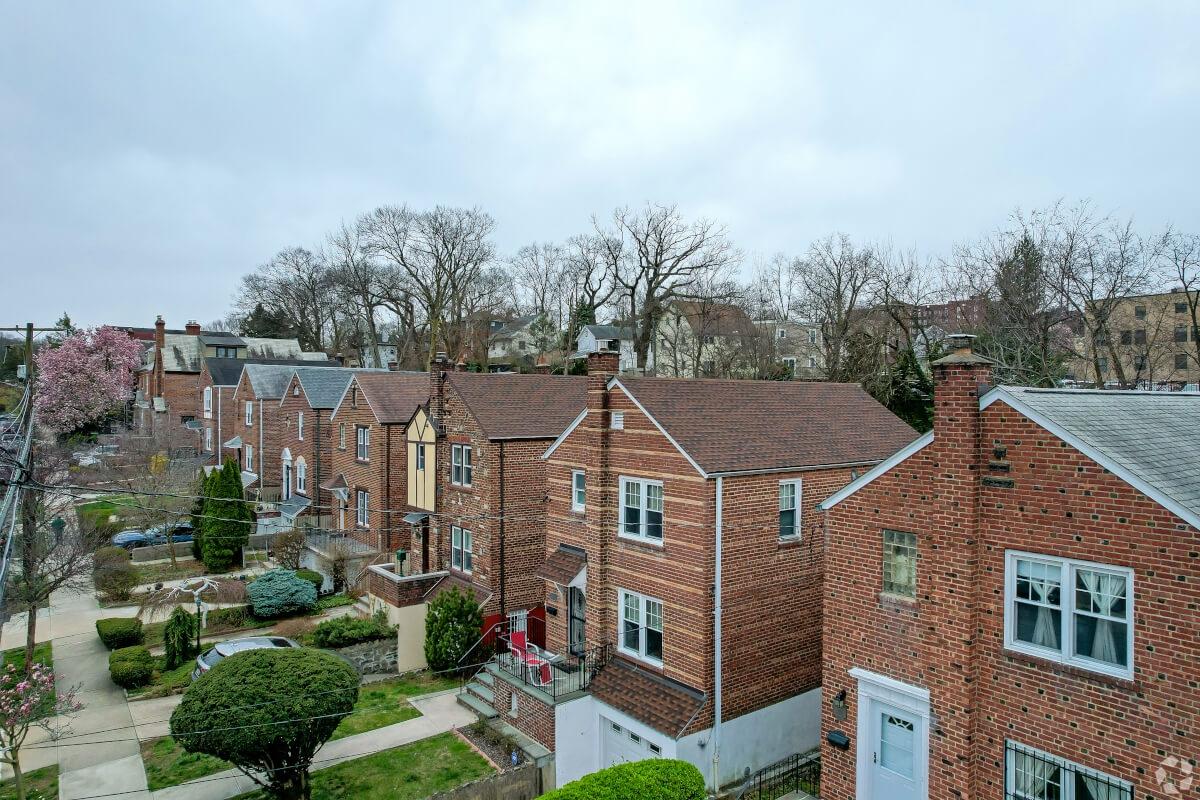
North Riverdale feels like a small town in a big city. This homey suburb is surrounded by greenery and is perfect for renters who value peace and quiet. Public transit is never far away, with bus routes and the Metro-North Railroad connecting residents to Manhattan and other parts of the Bronx.
North Riverdale borders Van Cortlandt Park, offering residents proximity to sports fields, hiking paths, and even a public golf course. If you’re hungry, several locally owned restaurants are scattered along Riverdale Avenue.
Spuyten Duyvil
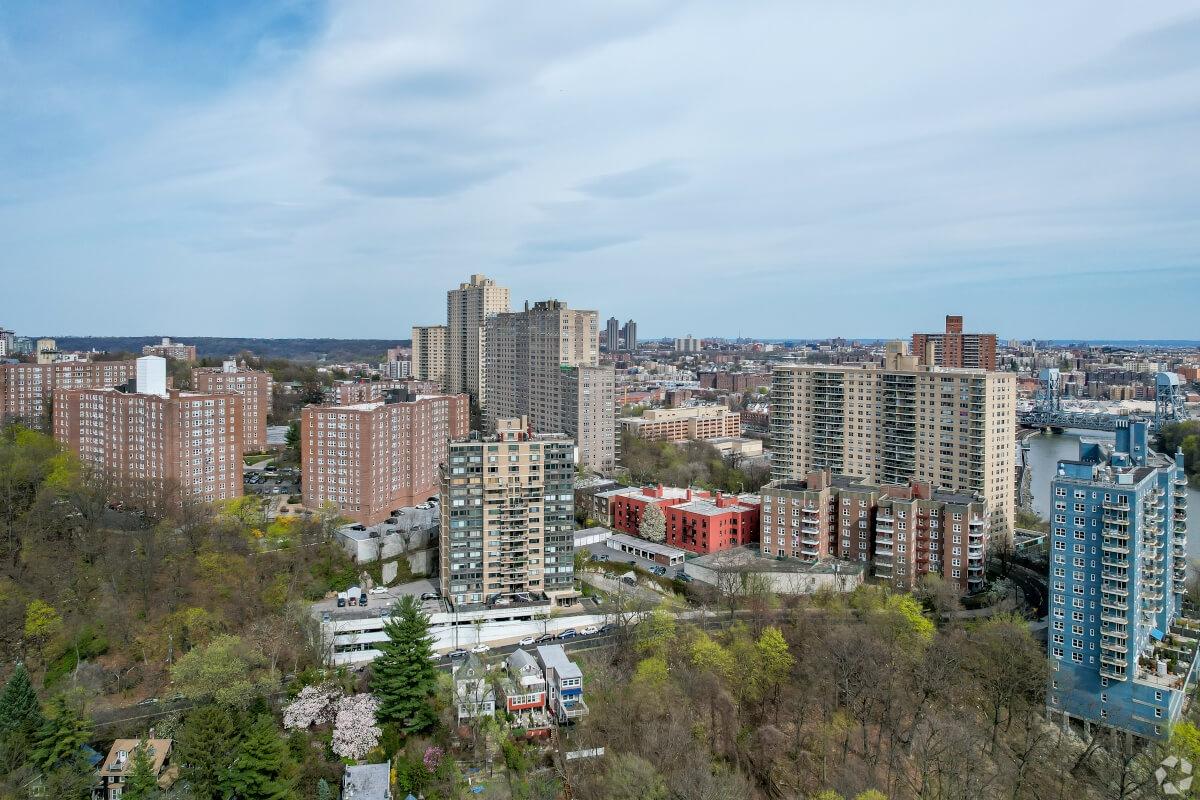
Situated along the Spuyten Duyvil Creek that connects the Harlem and Hudson Rivers, the Spuyten Duyvil neighborhood offers high-rise apartment buildings with stunning waterfront views and a convenient location. This upscale area has numerous parks where residents can enjoy fresh air.
Spuyten Duyvil, like much of New York City, was originally part of the Dutch settlement of New Amsterdam. According to the New York City Department of Parks & Recreation, historians debate the Dutch origins behind Spuyten Duyvil’s name. One translation is “Spuit den Duyvil,” meaning “Devil’s Spout,” possibly in reference to the choppy waters in the area. Another translation is “en spijt den Duyvil,” meaning “in spite of the Devil” and in reference to Washington Irving’s story about a Dutch trumpeter who vowed to cross the creek during a British attack “in spite of the Devil.” Regardless, residents of Spuyten Duyvil enjoy a peaceful lifestyle free of devils, spouting or spiting.
Queens
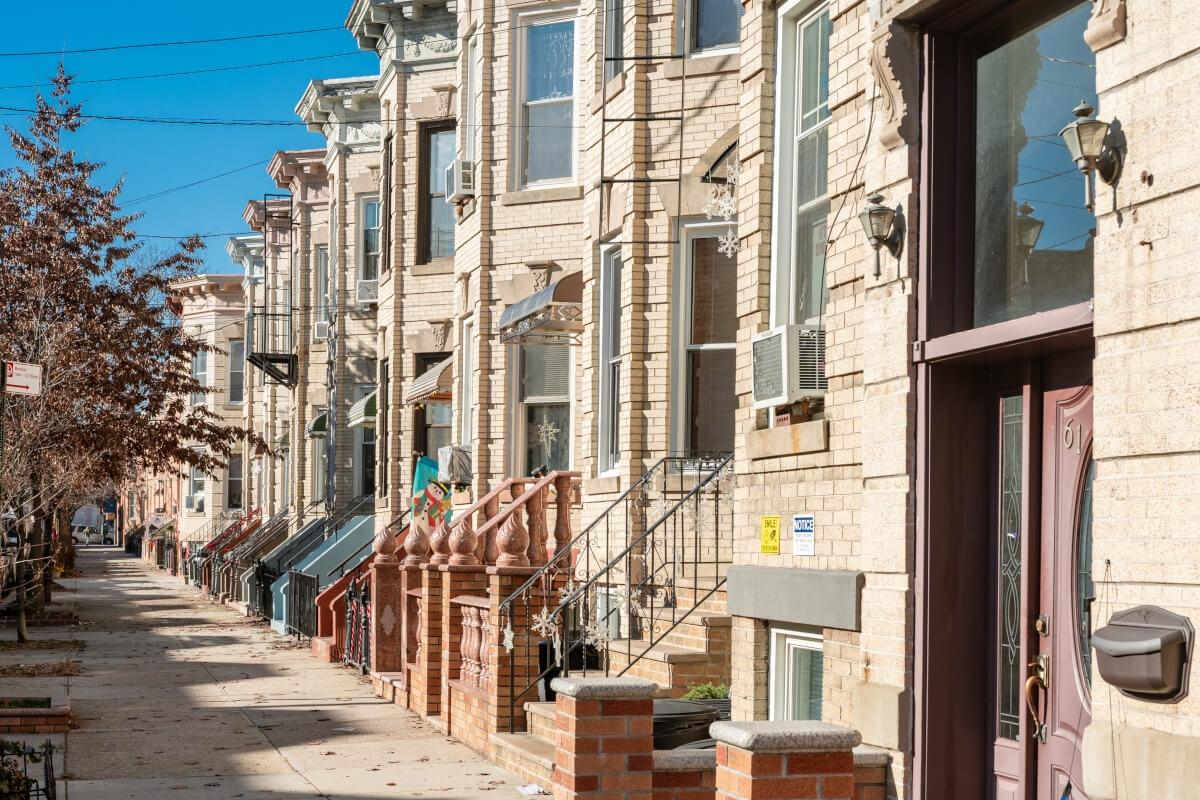
The largest and most culturally diverse of the boroughs, Queens is a great place for commuters who want some breathing room and a lower price tag. The cost of living in Queens is about 37% lower than that of Manhattan, so you can get more bang for your buck while still being within reach of all the excitement.
The five best places to live in Queens in 2025 are:
Astoria
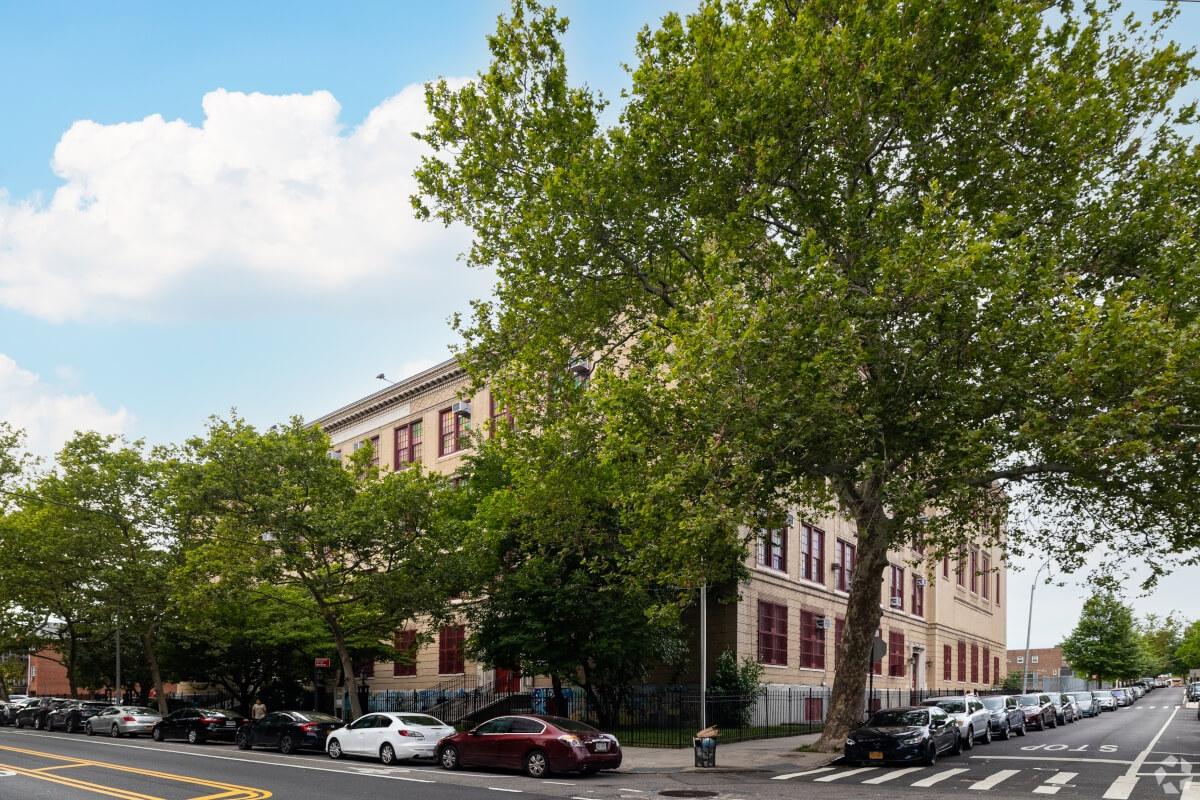
Just north of Long Island City, Astoria’s lively streets are home to locally owned restaurants and cozy cafes, and the borough’s diversity means you can find incredible food from around the world. The neighborhood is particularly famous for Kaufman Astoria Studios, the studio that films Sesame Street.
Subway lines N and W connect Astoria to Midtown Manhattan in under 30 minutes, making it a favorite for commuters. Renters have their pick of historic row houses and newer builds, and rentals along the East River offer views of Manhattan. Residents love living walking distance to great restaurants, public transit, and sports courts at Astoria Park.
Forest Hills
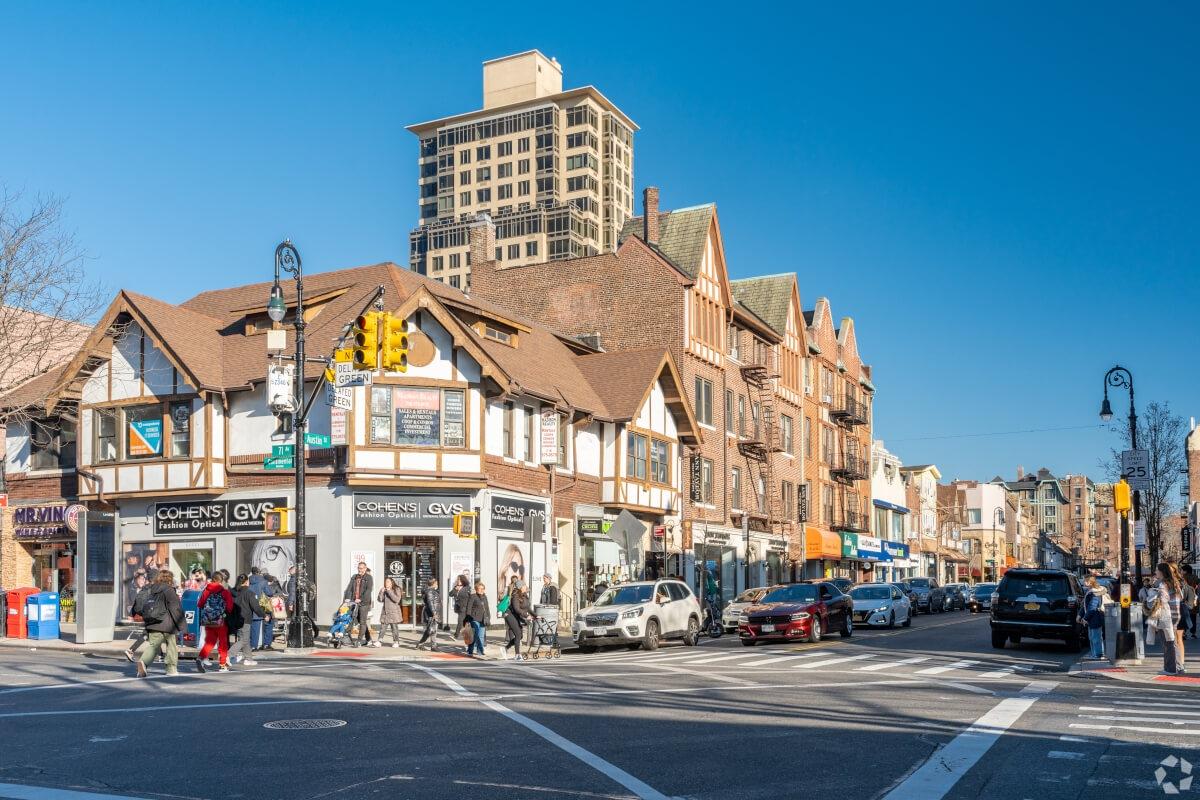
Forest Hills is a suburban area in the middle of Queens. Residents enjoy residential streets, Tudor-style homes and red brick high-rise apartments, and a commercial hub along Austin Street. Forest Hills Stadium in the middle of the neighborhood is an outdoor venue that hosts frequent concerts, and Forest Park to the south has over 500 acres of green space for relaxing. Flushing Meadows Corona Park and the Queens Botanical Garden are also nearby, making for a perfect day out.
Despite its location far from Manhattan, Forest Hills residents can still get to Penn Station within 20 minutes on the Long Island Rail Road’s City Terminal Zone line. The E, F, M, and R subway lines also connect the area to Midtown Manhattan, offering a variety of commuting options.
Jackson Heights
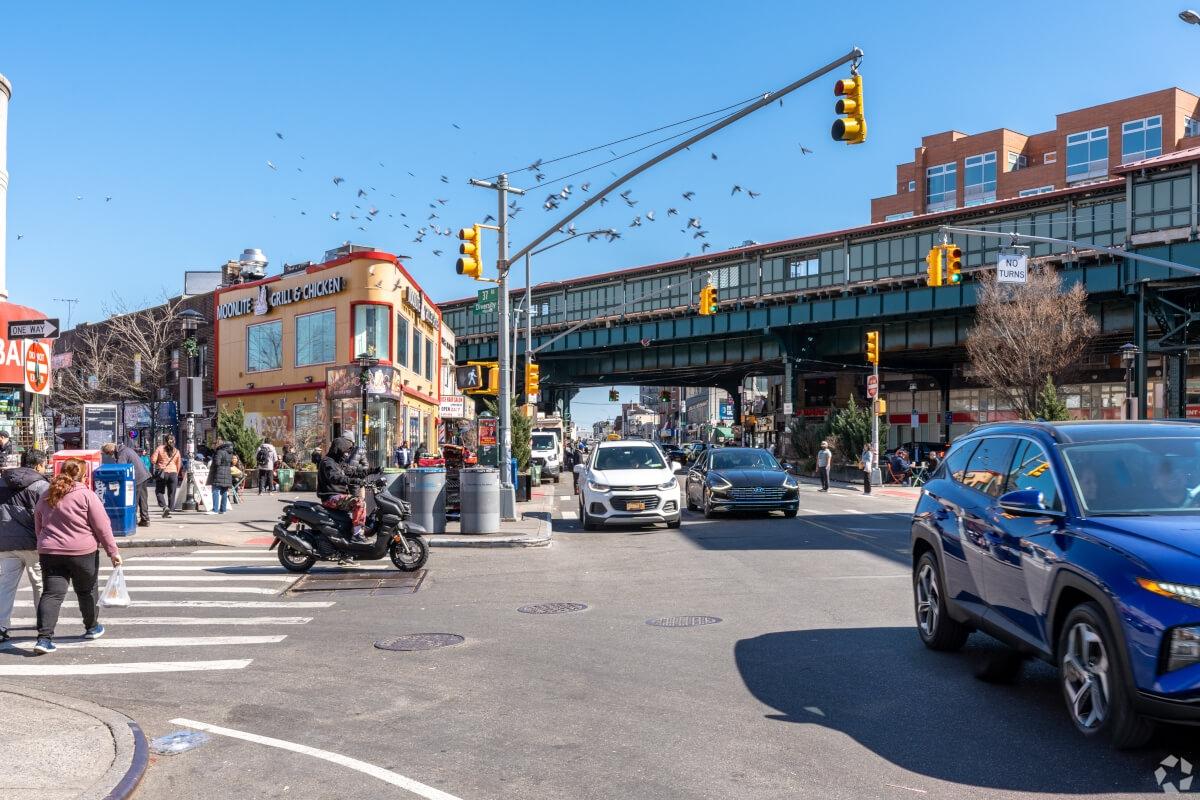
Known for its cultural diversity and pre-war architecture, Jackson Heights offers a welcoming community home to some of the city’s best Indian, Nepalese, and Latin American dining. Renters seeking an active nightlife will enjoy the bars along Northern Boulevard and Roosevelt Avenue, and the Roosevelt Shopping Center has everything from a coffee shop to a tropical fish store.
Transit options include the 7, E, F, M, and R subway lines, providing excellent connections to Manhattan and beyond and making Jackson Heights a great place to live for commuters who want to live in a cultural melting pot.
Kew Gardens
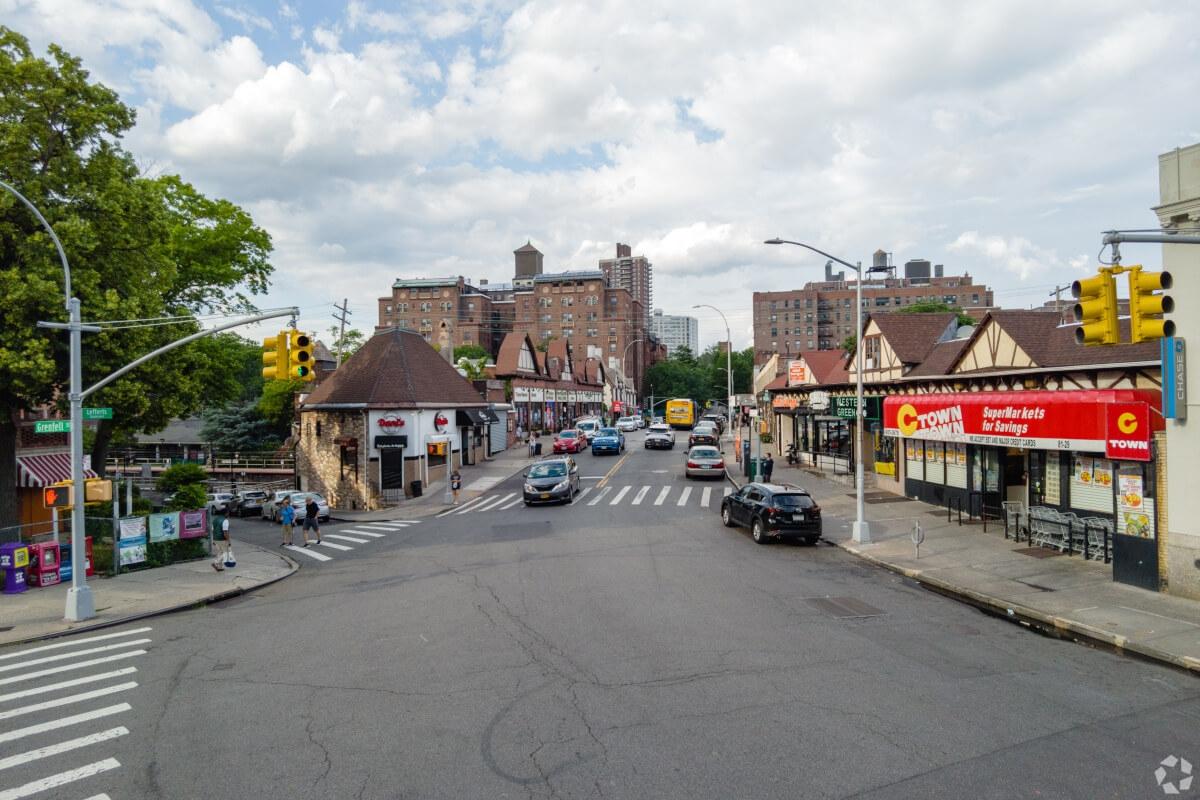
Kew Gardens provides a tranquil escape with its shaded boulevards and densely packed apartment buildings. The area has several highly rated K-12 schools, and nearby colleges like Queens College and St. Johns University make this a great neighborhood for academics.
Subway lines and the Long Island Rail Road connect Kew Gardens to Manhattan and to other parts of Queens, providing commuters with multiple travel options. Numerous bus lines service the area, making it easy to explore the neighborhood without a car.
Sunnyside
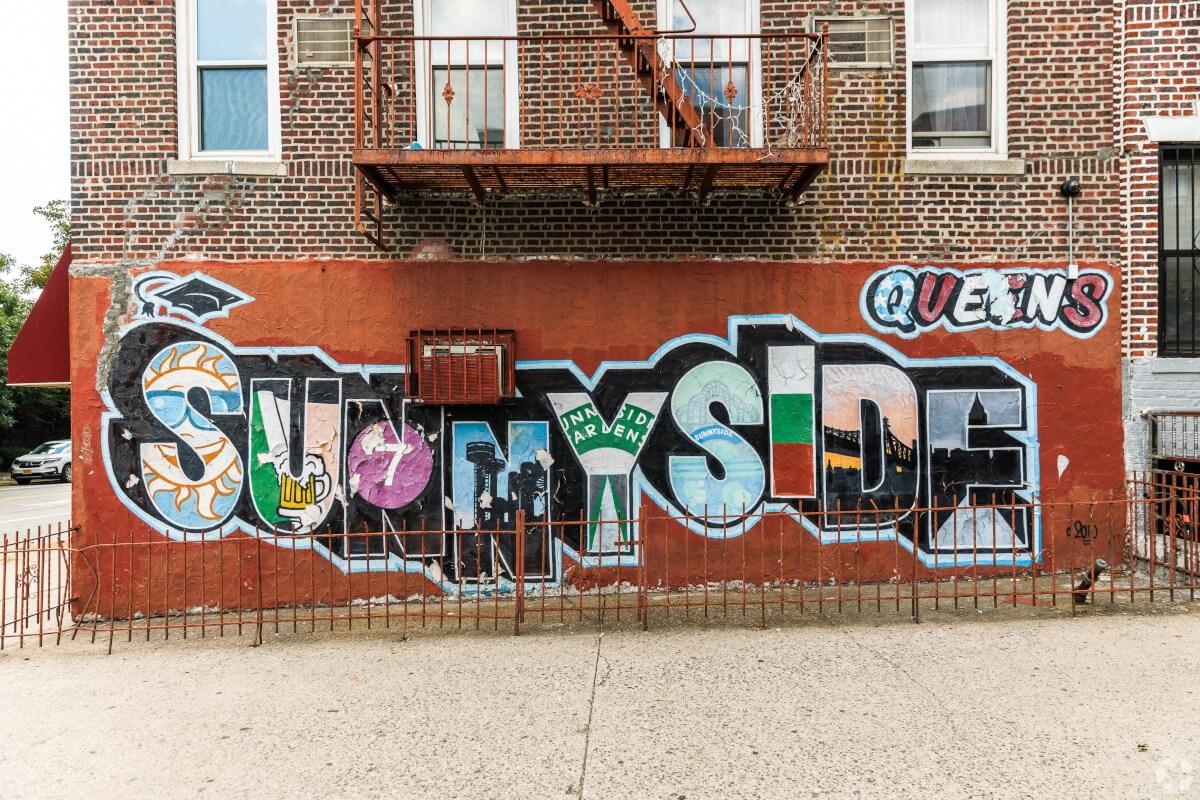
Sunnyside is a residential area just south of Astoria where you’ll find single-family homes, low-rise apartments, and townhomes in every style. with a mix of multi-family homes and low-rise apartments. The neighborhood is famous for its Sunnyside Gardens Historic District, a planned housing development featuring quaint streets and charming architecture. Cafes, pubs, and eateries offering global cuisines dot the area.
The 7 train connects Sunnyside to Midtown Manhattan in about 20 minutes, making it a great location for those working in the city. The Long Island Rail Road City Terminal Zone and Port Washington Branch both stop in Woodside next door, providing more transit options for commuters.
Staten Island
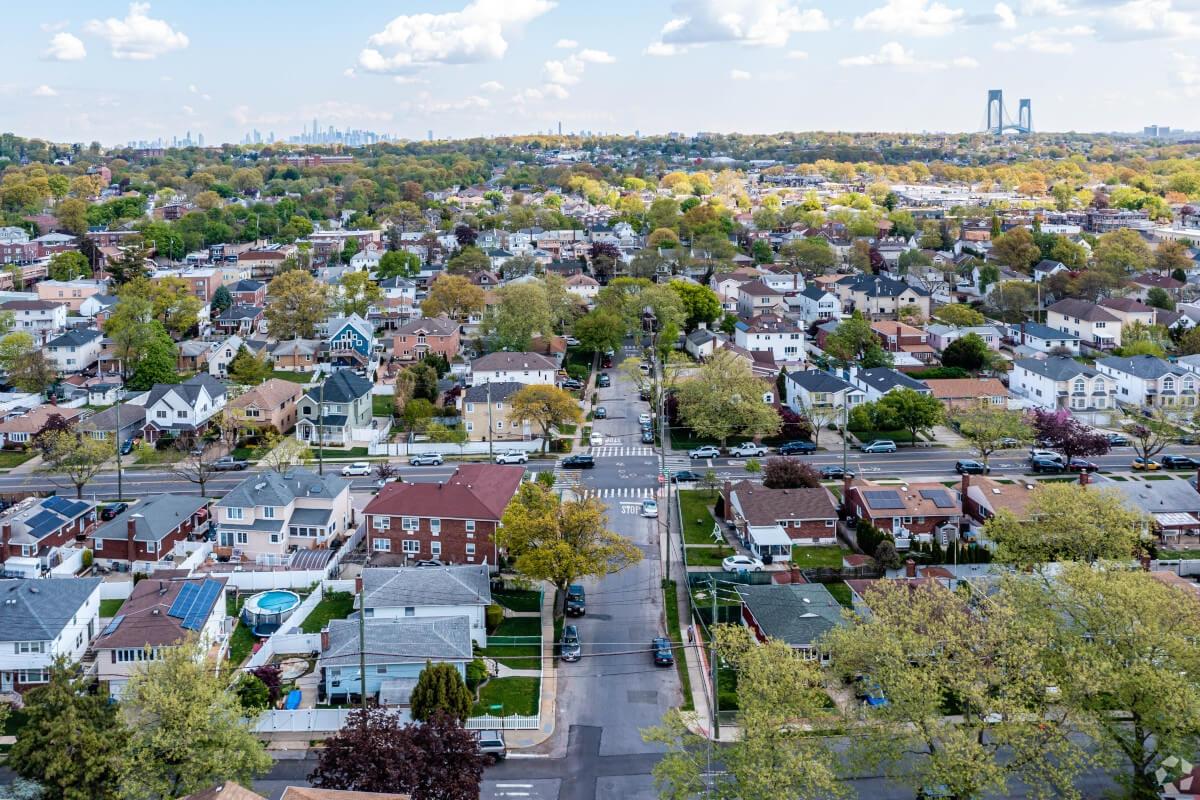
Staten Island is NYC’s quietest borough, providing a more suburban experience compared to the rest of the city. With its abundance of parks, beaches, and recreational facilities, it’s an attractive option for renters seeking escape from the hustle and bustle of city life. While not the ideal borough for renters who work in Manhattan, Staten Island has great private and public schools and local businesses that enhance the community.
The five best places to live in Staten Island in 2025 are:
Castleton Corners
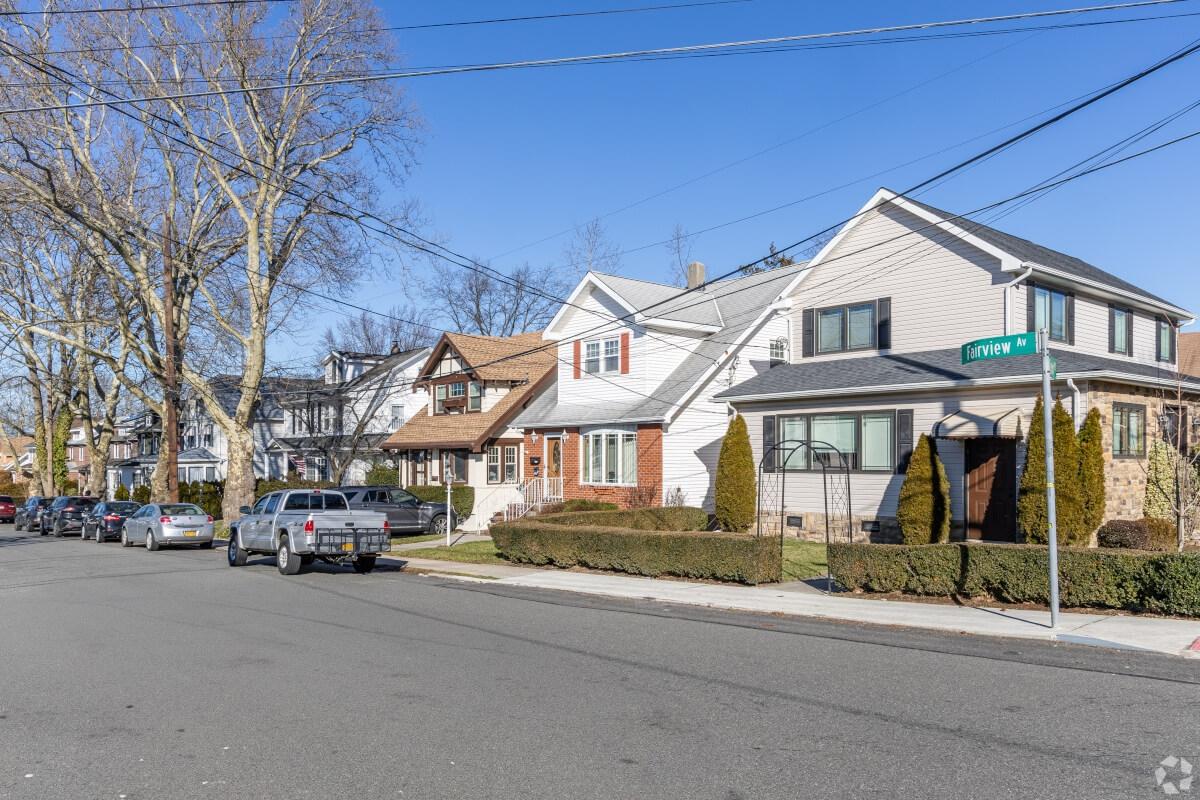
Castleton Corners offers a peaceful, residential community filled with single-family homes and apartments. Small businesses, bakeries, and schools create a localized feel, but residents still have access to major retailers on Forest Avenue. Clove Lakes Park is a local gem, providing open spaces and trails to enjoy. Transportation includes local and express buses, connecting residents to the Staten Island Ferry in St. George for access to Manhattan.
Great Kills
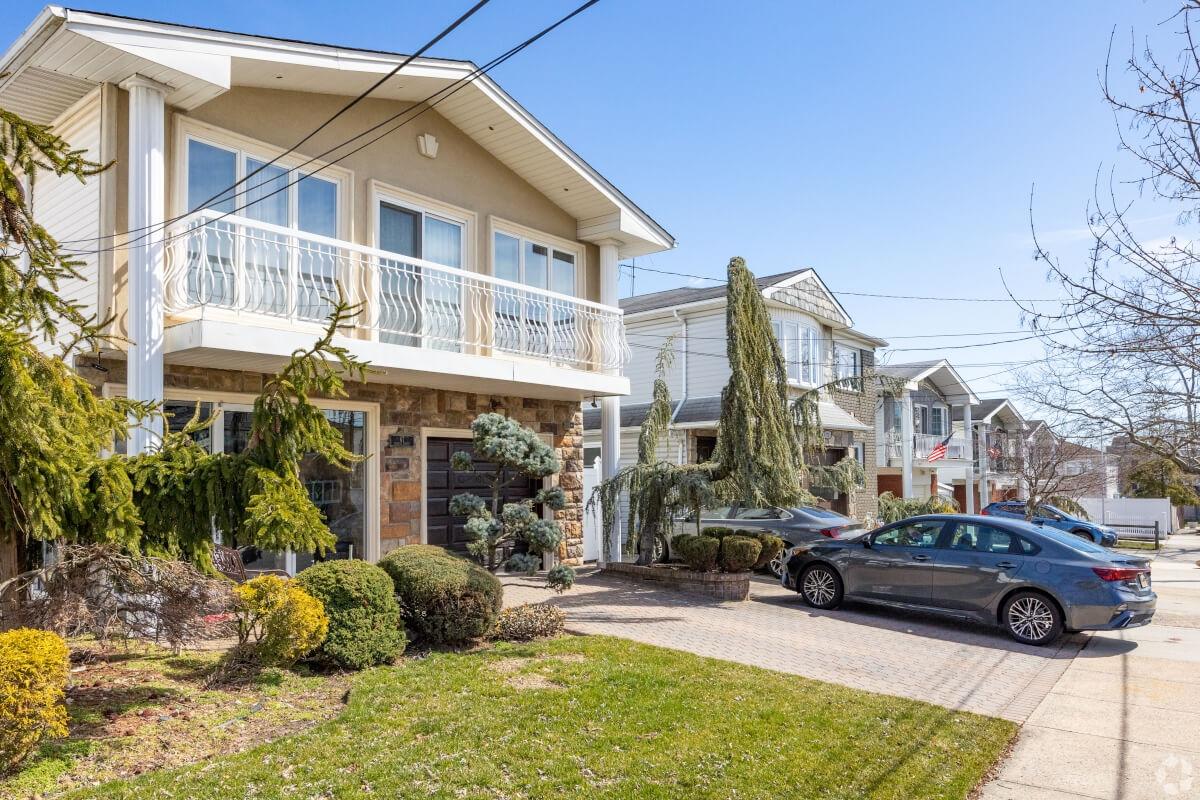
Great Kills is known for its waterfront access and marinas, making it popular with renters who enjoy boating or dining with water views. The Staten Island Greenbelt runs through the area, offering numerous trails and recreational spots, and Amboy Road is the neighborhood’s commercial center. The Great Kills Station is along the Staten Island Railway route, providing quick travel across the island and to the Staten Island Ferry.
Silver Lake
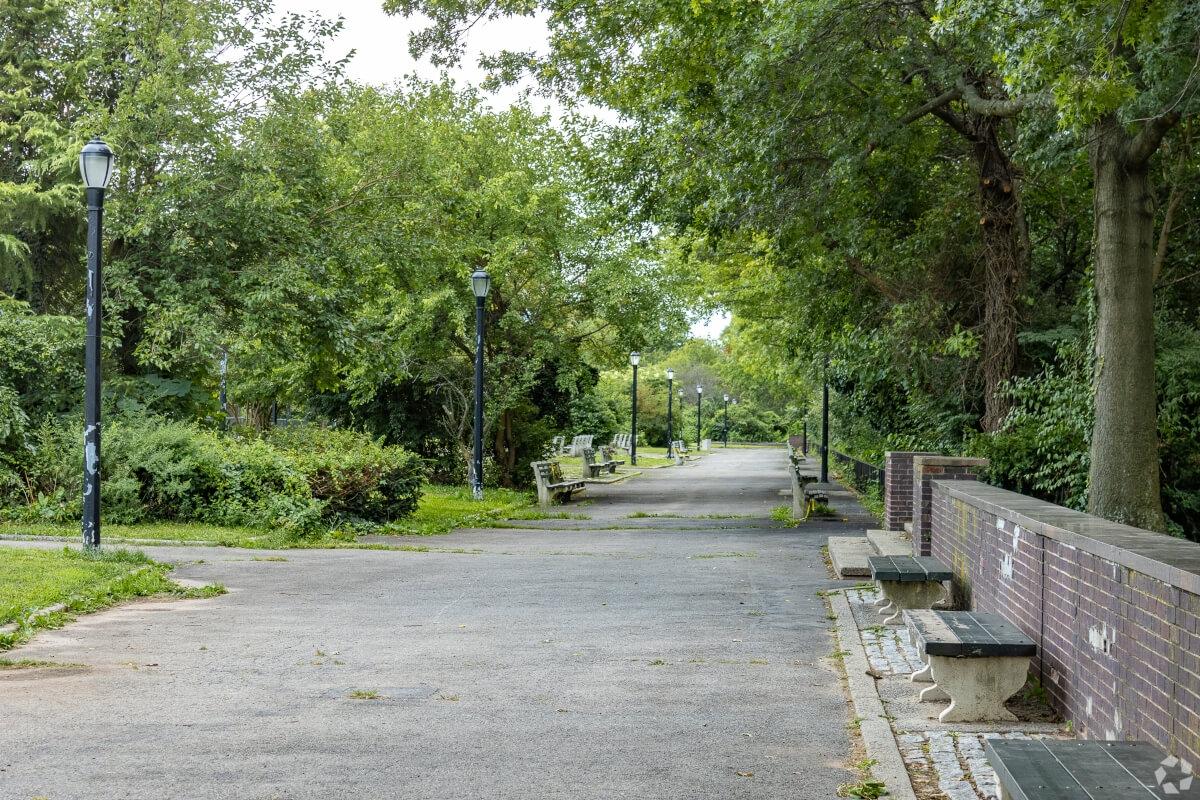
Silver Lake boasts its namesake park, created in response to Manhattan’s Central Park, where residents can enjoy golf courses, trails, and serene lake views. Single-family homes are a hallmark of Silver Lake, but the area also has a few high-rise apartment buildings. Public transit options include buses connecting to the ferry.
Tottenville
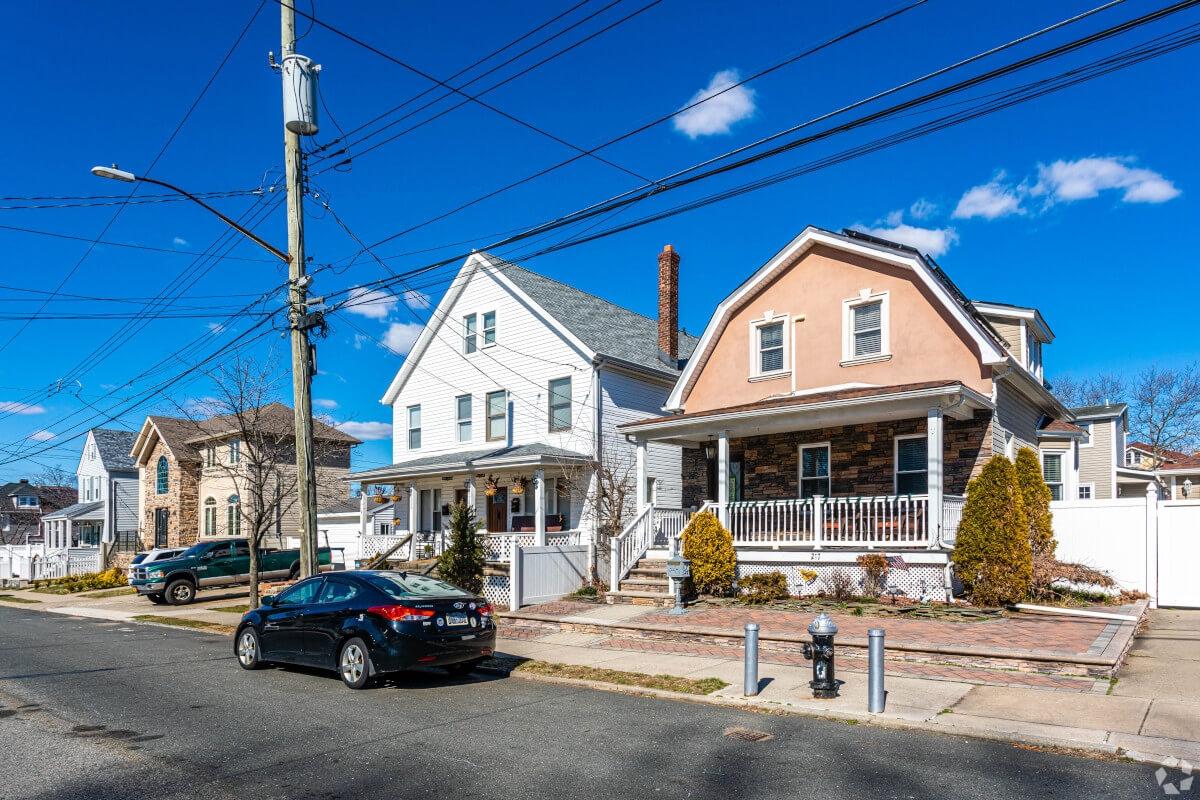
Tottenville, located at the southernmost tip of Staten Island, offers a coastal suburban atmosphere on Staten Island’s South Shore. Beaches and parks are abundant, while Amboy Road hosts local shops and restaurants. Commuters rely on the Staten Island Railway, connecting them to the St. George Ferry Terminal to travel to Manhattan. For renters who prefer a quieter, more spacious environment, Tottenville is ideal.
West Brighton
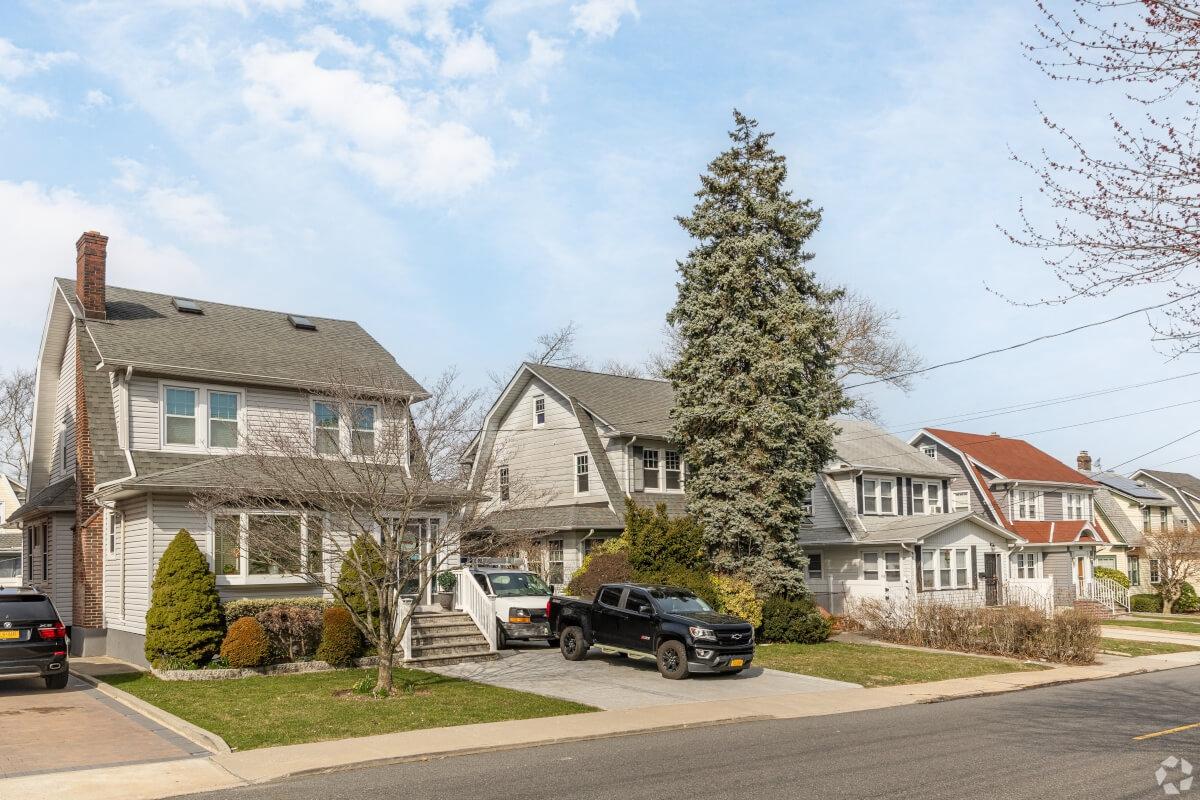
Tucked between Castleton Corners and Silver Lake, West Brighton is home to Staten Island’s cultural hubs. The Staten Island Zoo houses over 1,100 animals, and shops and restaurants on Forest Avenue have something for everyone. Transit includes local and express buses, with ferry access for trips to Manhattan.
Ready to make the move?
If NYC has caught your eye, take the next step with Apartments.com! Whether you’re dropping in for a short-term lease or hoping to set down roots, Apartments.com has the tools to help you find the perfect place. Navigate housing across neighborhoods with our customized search engine and use our customizable filters to narrow your search by price, amenities, and floor plan.
Wherever you are and wherever you’re going, the options are endless with Apartments.com.


